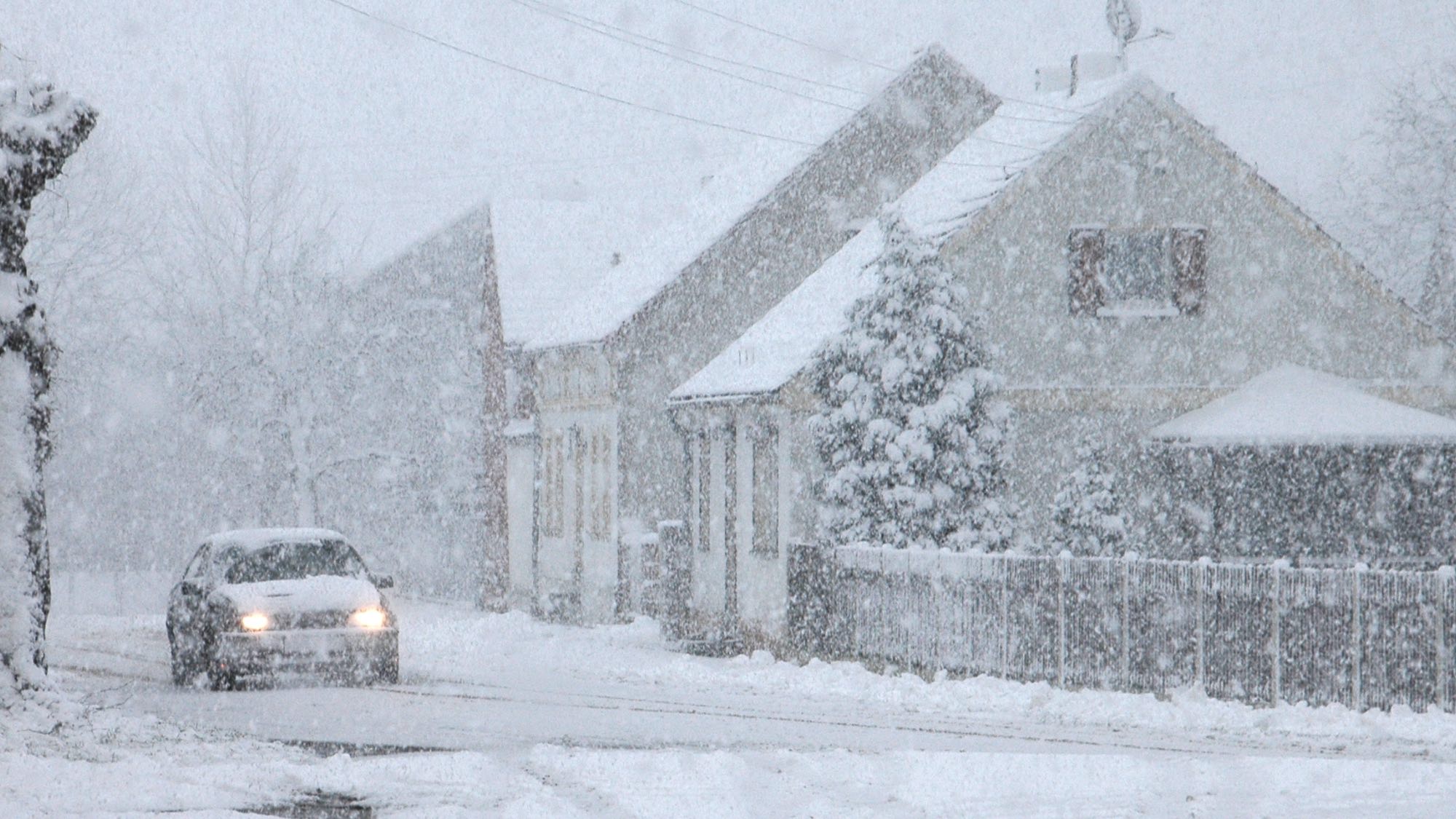Tom's Guide Verdict
Outdoor videographers and adventurous types will love this compact, easy-to-fly and high-quality drone that won’t take much space in their backpacks.
Pros
- +
Folds into very small space for storage
- +
Easy to fly
- +
Takes great quality video
- +
Long wireless range
Cons
- -
Some glitches in video
- -
Controller too small to hold tablets
Why you can trust Tom's Guide
The DJI Mavic Pro is a revolutionary drone in a number of ways. It folds up to about the size of a pigeon, and offers rock-steady 4K video, smooth flight and a huge array of flying features. It's a quite remarkable drone that boasts features most aerial video makers will want, but in a package that is small enough to fit into a shoulder bag, with enough room for a couple of spare batteries.
Design
The Mavic Pro is a small drone, measuring just 8 x 4 x 3.5 inches in its stored configuration. That's about the size of a 2-pint milk container. When you want to fly, the front arms fold forward and the back legs fold down and back, so the drone is about 17.5 inches wide from rotor tip to tip. The arms lock into place when extended. Two rotors are attached to the top of each of the motors on rotating hinges, so when they are in the storage position, these rotors lie flat against the body of the drone.

Unpacking the drone for flight is very simple: just remove the gimbal holder, fold the front arms out, then unfold the back legs, plonk it onto a flat surface, press the battery button twice and it's ready to go. It's an impressively simple, but compact design.
On the front of the drone is a plastic dome that covers the camera and gimbal mechanism. This unusual arrangement keeps the camera and gimbal protected from water and dirt, so they are less likely to be buffeted by wind or damaged by splashes, dust or a crash. It does mean that you need to keep the dome clean, though, as any dust or scratches will affect the video. (You can easily remove and replace the dome.) One problem I found is that the included plastic cover that you put over the gimbal cover to keep it scratch-free doesn't stay in place very well: it would be easy to inadvertently knock it off when stuffing the drone into a bag, leaving the cover unprotected.
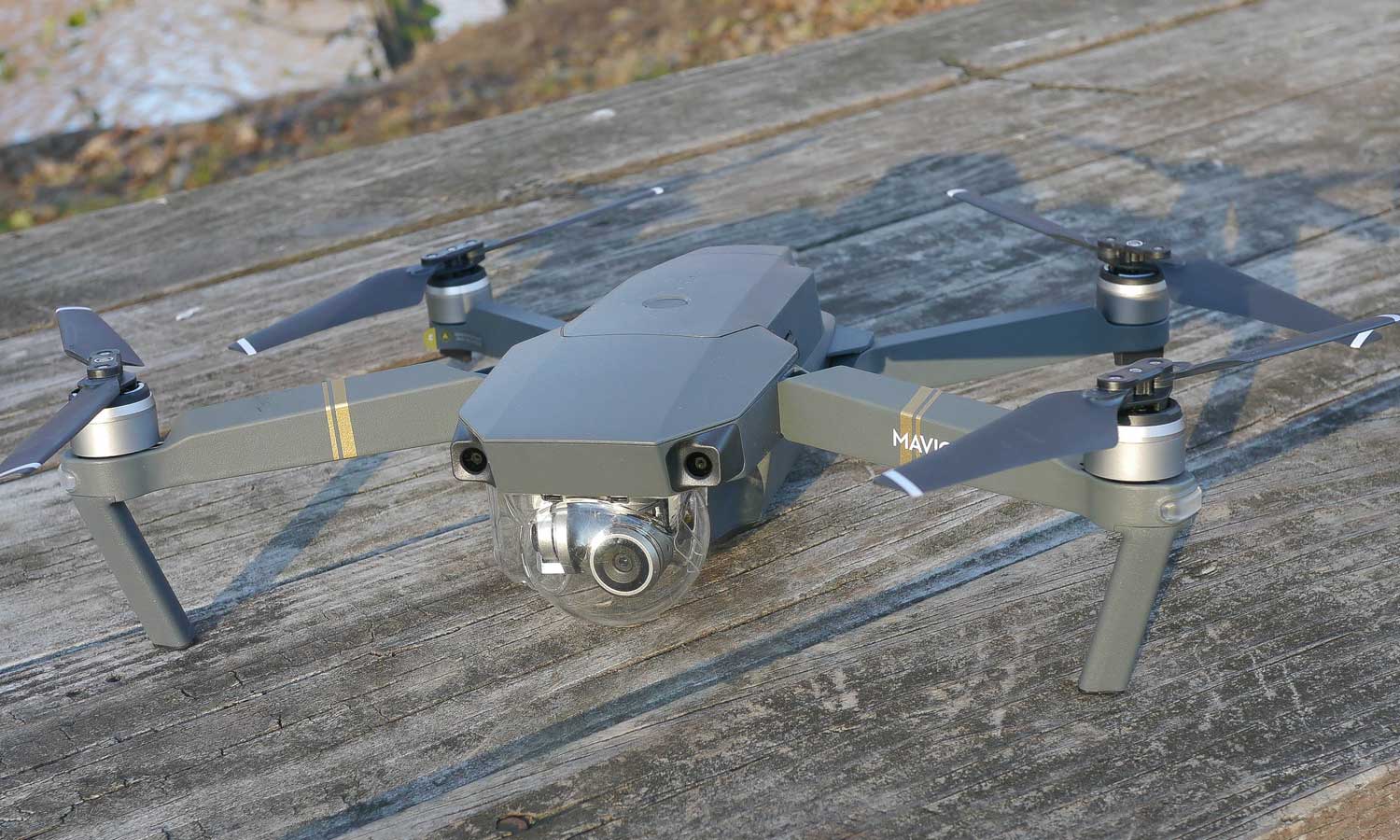
A couple of stubby legs poke out of the bottom of the case, and two legs on the front arms form the landing gear. This does put the drone body very close to the ground, which might make it difficult to take off in grassy or overgrown areas.
The battery fits into the top of the drone body, locking firmly into place. It's easy to remove, though: Just press the two buttons on the sides and it lifts out. This battery holds 3830mAh/43.6 Wh of juice. The included charger can also provide juice to the controller, and offers an additional USB port for charging a phone or tablet.
Various other sensors are located around the body. Twin cameras on the front watch out for obstacles in front of the drone, while an ultrasonic sonar system on the bottom of the Mavic's body measures the distance to the ground for landing and keeping a fixed altitude.
Get instant access to breaking news, the hottest reviews, great deals and helpful tips.
MORE: The Best Drones and Quadcopters on Any Budget
On the side of the drone, a small panel covers the microSD card slot and a micro USB port. A 16GB microSD card is included, and the drone appears as a removable drive when you connect it to a computer, so you can copy videos and photos off it.
Controller
The Mavic controller is very small compared with most drone controllers, measuring just 6 x 2.5 x 2.5 inches in its stored configuration. When you want to use the controller, two antennas fold up and two arms on the controller's bottom fold out. These arms hold the smartphone that displays the preview video from the drone. While the arms can accommodate a range of phones large and small, they can't handle a tablet: even an iPad Mini won't fit. The maximum size tablet it can hold is 7 inches wide.
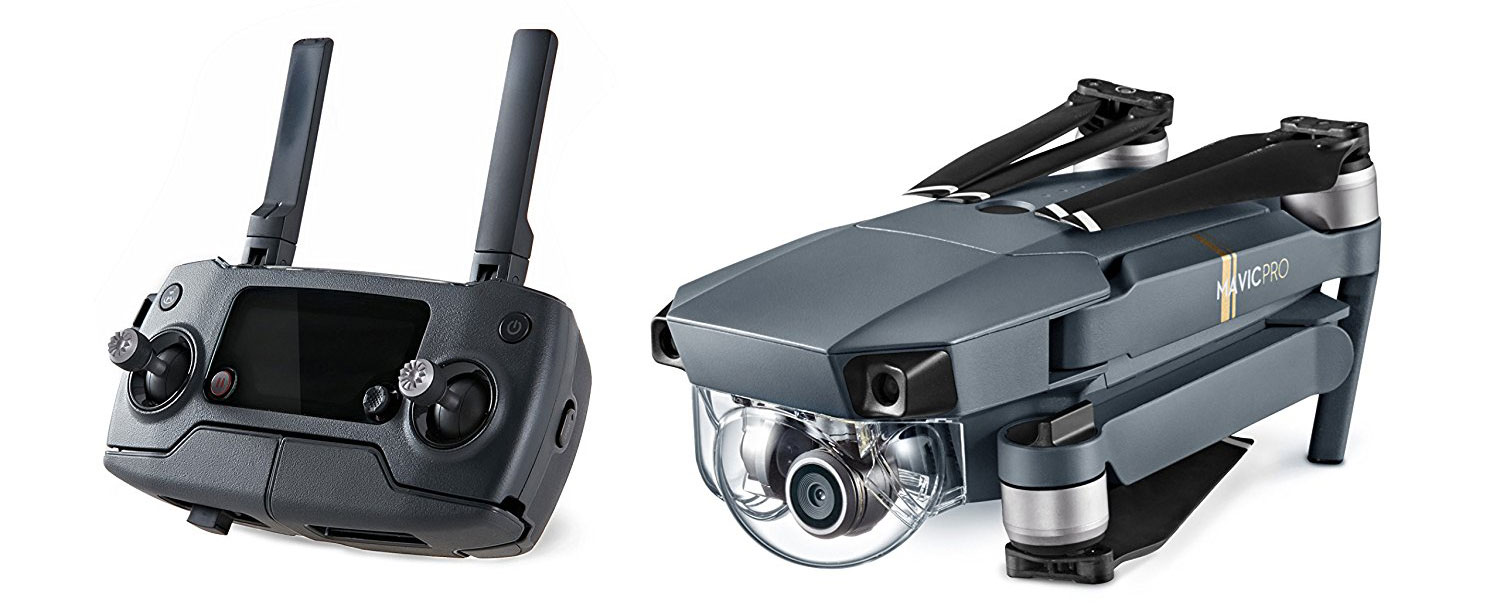
The connection between controller and phone isn't wireless: instead, a cable connects the controller to the port of the phone or tablet. Cables are included for the Lightning port of iPhones, the micro USB of most Android phones and the USB-C cable found on many recent Android phones. Plug the device into the controller, and it starts the DJI Go app. (You can use the drone without a cellphone, but you don't get any preview video or access to the more advanced features.)
The controller itself includes the two control sticks, three buttons and one directional control on the front, two buttons and two dials on the top and two more buttons on the back. There's also a slider switch on the left side of the controller that enables sport mode. That's a lot of buttons and dials, but they're all easy to reach without loosening your grip. In addition, the four-way directional control can be customized to control a number of features, such as tilting the camera.
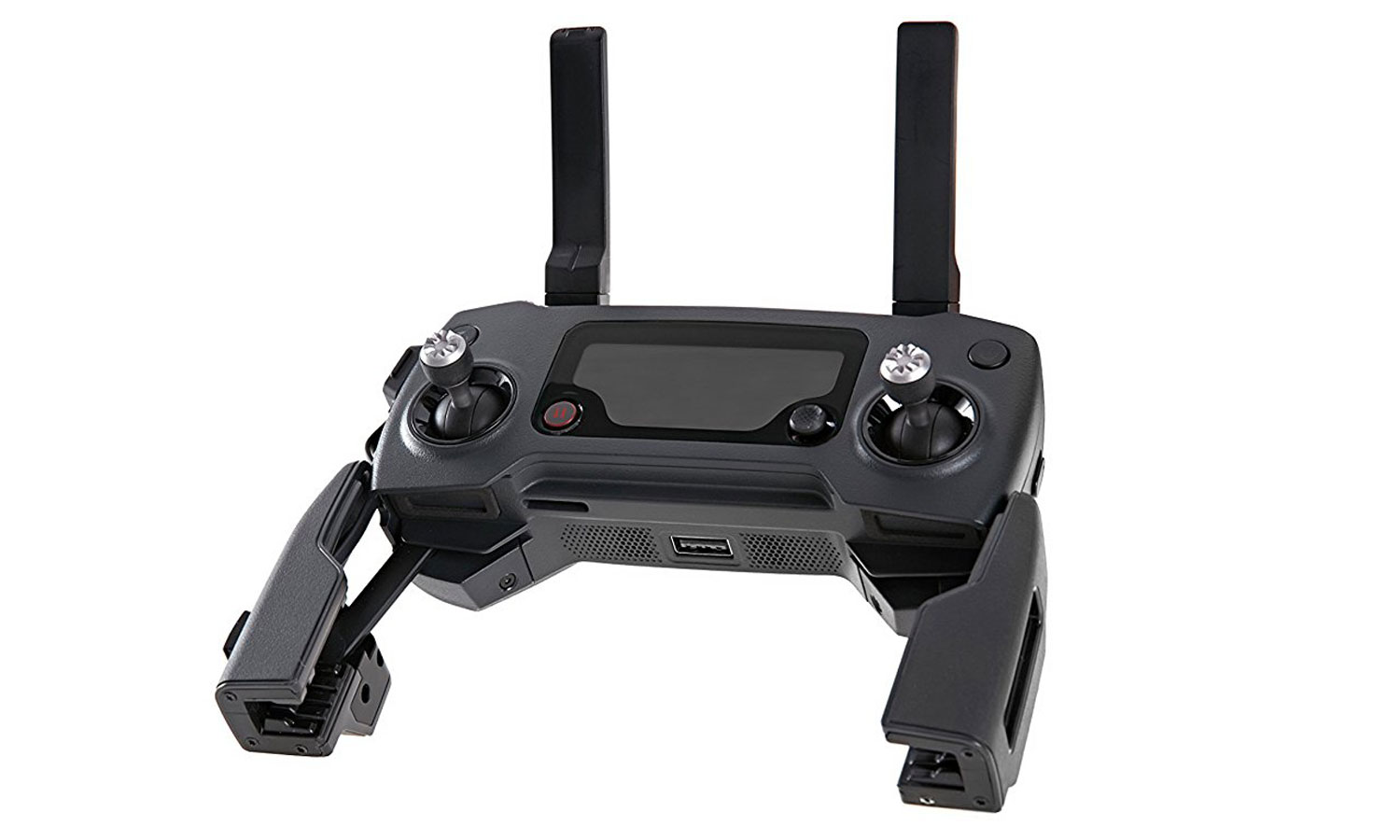
The DJI Go app is available free for iOS and Android; it's the same version used for the company’s Phantom and Inspire drones. It offers a full-screen preview of the video from the camera overlaid with bits of information on altitude, battery and other info. A variety of on-screen control buttons surround the video, including those to select flight mode, change the camera settings, start/stop video and take a still image.
Flying
The Mavic Pro is a very simple drone to fly. To take off, just tap the takeoff button in the DJI Go app, and the drone lifts off and hovers about 4 feet off the ground. From there, it's up to the pilot: the left control stick is for altitude and rotation, and the right stick is for forward-back and left-right movement. The Mavic is a responsive flier, reacting quickly to even a light touch of the controls. It starts out in a beginner mode, which limits the speed and distance that the drone can fly. But if you flick the switch into sport mode, the Mavic Pro turns into a rather speedy drone that can turn and twist at surprising speed. DJI claims a maximum speed of 40 miles per hour, and I don't doubt that. The drone really zipped along.

Camera drones like the Mavic are more about keeping the camera steady than zooming around at high speed, though. The Mavic had no problems handling that task. Even on a day with wind gusts of up to about 10 mph, it managed to hover in place. Although the drone was bouncing around a little in the gusty wind, the video it captured remained mostly steady as the gimbal compensated for the drone's movement.
We also found that the 2.4GHz wireless link between the controller and the drone was much stronger than other drones: we were able to control the drone and see the preview video from several hundred feet away in a clear area. This connection is not a Wi-Fi signal, but it does use the same often-crowded part of the spectrum. DJI claims a range of up to a kilometer (about 3,300 feet), but I wouldn't trust it this far out, especially as objects such as trees and buildings tend to block the signal. When the signal did get lost, the drone automatically paused, then retraced its steps and the link was re-established without problems (but not without a few skipped heartbeats on my part).
MORE: Why Drone Racing is the Next Big Sport
You do need to keep an eye on the focus of the camera. Unlike many drone cameras, the Mavic's features a proper auto-focus mechanism, but this will only activate when you tap on the green square on the screen, telling the app what to focus on. You should remember to do this before you start recording, as it is rather easy to forget, leaving you with slightly blurry, out-of-focus video.
Autonomous Flying
The Mavic offers a number of flight modes where the drone itself is in control, including TapFly, ActiveTrack, Gesture Mode, Tripod Mode and Terrain Follow Mode.
In TapFly mode, as the name suggests, you tap on the screen and the drone flies in the direction you indicate. The idea is that you tap something on the screen and the drone flies toward it. You can still control the height and rotation of the drone, so this can be used to create flybys or overflights, where you fly over an object and pan the camera to track it. The drone uses the onboard cameras to detect any objects in the way, and will slow down and stop if it spots something in its path. This mode works pretty well, keeping the drone on a straight path. However, you shouldn't rely on the collision detection system alone: It only detects objects straight ahead of the drone.
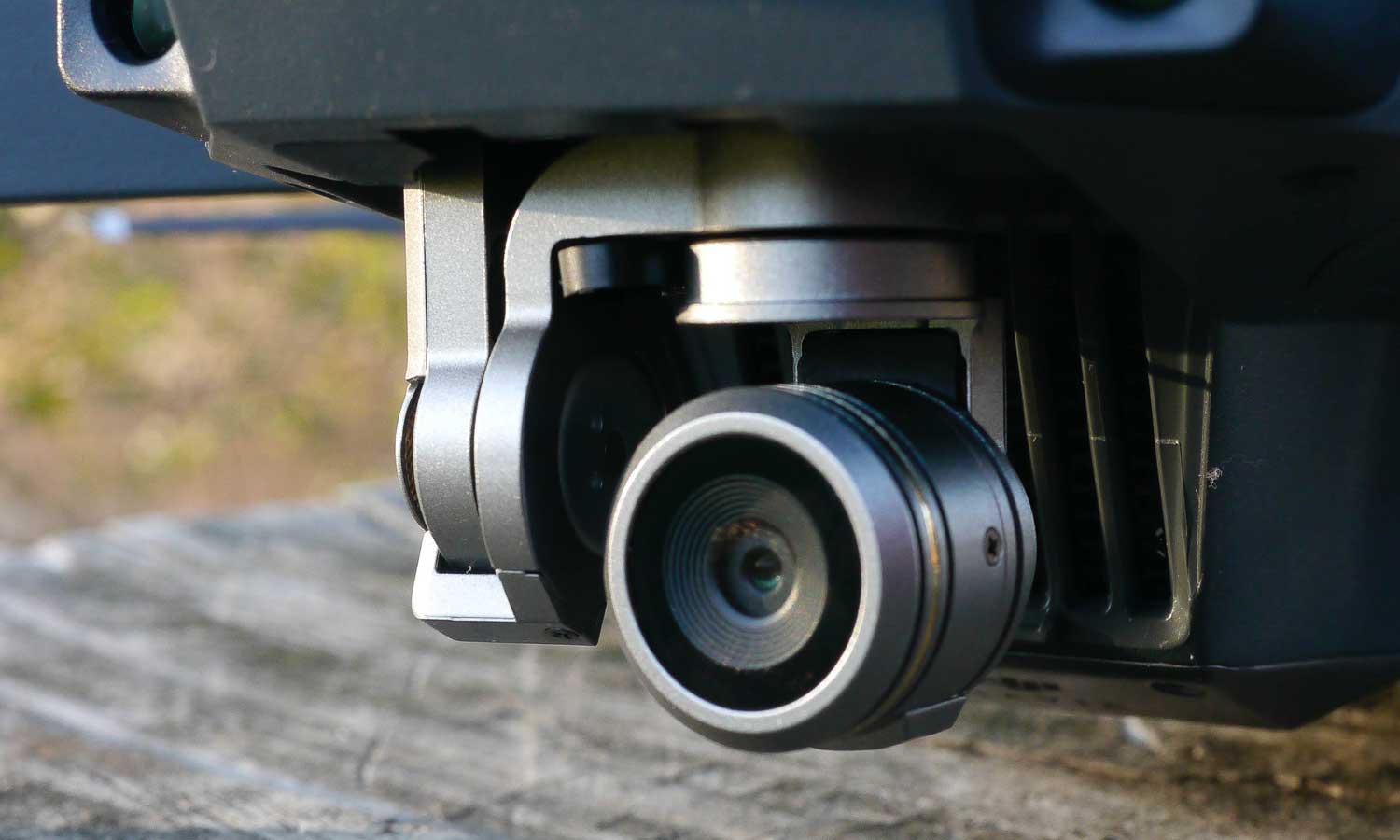
ActiveTrack is the smartest mode. Here, you select an object in the view of the drone camera, and it will analyze and try to track the object, using its shape and color. There are a few different ways that this can be used: The Track setting will actively move the drone to track a moving object, keeping the same distance from the subject. Spotlight keeps the camera centered on the tracked object, but the pilot can still fly the drone. Basically, it is a way to keep the subject in the center of the frame automatically while flying around it, rather like the orbit feature of such drones as the 3DR Solo.
Profile will try and keep a fixed angle and distance from the subject and preserve the shape of the profile. Imagine you are composing a shot of your hero purposefully striding across the moor, shot from the side to show that handsome face. Profile mode will try to keep the side shot as the hero moves, adjusting for any turn or shift in position. I found that all of these tracking modes worked well, easily managing to keep track of a human and a dog running around a field.
Gesture Mode is an interesting one. Here, the camera detects certain movements you make to take a photo without you having to use the controller. After you trigger Gesture Mode from the controller, the camera recognizes the profile of a person walking into the frame. When the person holds his or her arms up in the air, the drone fixes the distance and will track the subject to keep the same distance if the subject moves. Finally, holding the hands up to make a picture frame triggers the 3-second selfie countdown, after which the camera will take a photo. It's an interesting idea, and works surprisingly well, as long as nobody else walks into the frame and your subjects aren't dancing.
Tripod Mode is another interesting idea, where the drone flies very slowly, and the controls are more sensitive, so you can approach and hover closer to objects than in the normal flight mode. This mode lets the drone get close to the subject while navigating carefully and holding as steady as possible.
Finally, Terrain Follow mode tries to keep a fixed altitude as the pilot maneuvers, detecting the height with the sonar sensors. It works only on smooth surfaces, such as grasslands or rock surfaces, though, and DJI warns that it shouldn't be used on any incline of more than 20 percent. That rules it out for most interesting uses, unfortunately: although it works for someone on a road, you can't use it to track a cyclist on a sloped track or a skier down any decent hills.
MORE: Drone Buying Guide: Everything You Need to Know
Photos & Video
The camera on the Mavic Pro is much smaller than the one on the Phantom 4 or other drones, but that didn't seem to affect the quality: I found that it captured excellent video and still images, with realistic color and lots of detail. Even at the maximum 4K video resolution, I found that this video was smooth, with very little loss of quality from compression and sharp details. It can capture 4K video (4096 by 2160 pixels) at 30 progressive frames per second (fps), but you can up this to 120fps if you step down to HD resolution (1280 by 720 pixels). This can be useful if you want to slow down the video to show action better: if you capture at 120fps and play it back at 30fps, the video is at quarter speed, which is great for action sports.
I found that the video did occasionally have a slight jitter as the drone shifted in the breeze and the gimbal compensated, but this was only evident on gusty days. The drone had no problem holding steady against a more constant breeze or on still days. I noticed an occasional jump when the drone was moving a lot and then stopped. This didn't show up in more sedate maneuvers, but you do need to remember to not move too fast or turn too quickly if you're trying to capture steady video.
I also found that the gimbal cover often caught reflections and sunbeams, producing an odd patchy look to the final product. This was especially true at sunset, when the low angle of the sun caught on the surface of the domed cover. If you want to avoid this, you can remove the cover.
Images are captured at 18 MP (4000 by 8000 pixels) resolution, and had the same excellent color and detail as the video.
Repairability
The DJI Mavic Pro is a tough little drone: I crashed it (accidentally) a few times, but it never sustained any serious damage, and even parts such as the hinges that allow the arms to rotate in and out weren't adversely affected. The only parts that sustained damage and which might need repair on a regular basis would be the rotors and the gimbal cover.
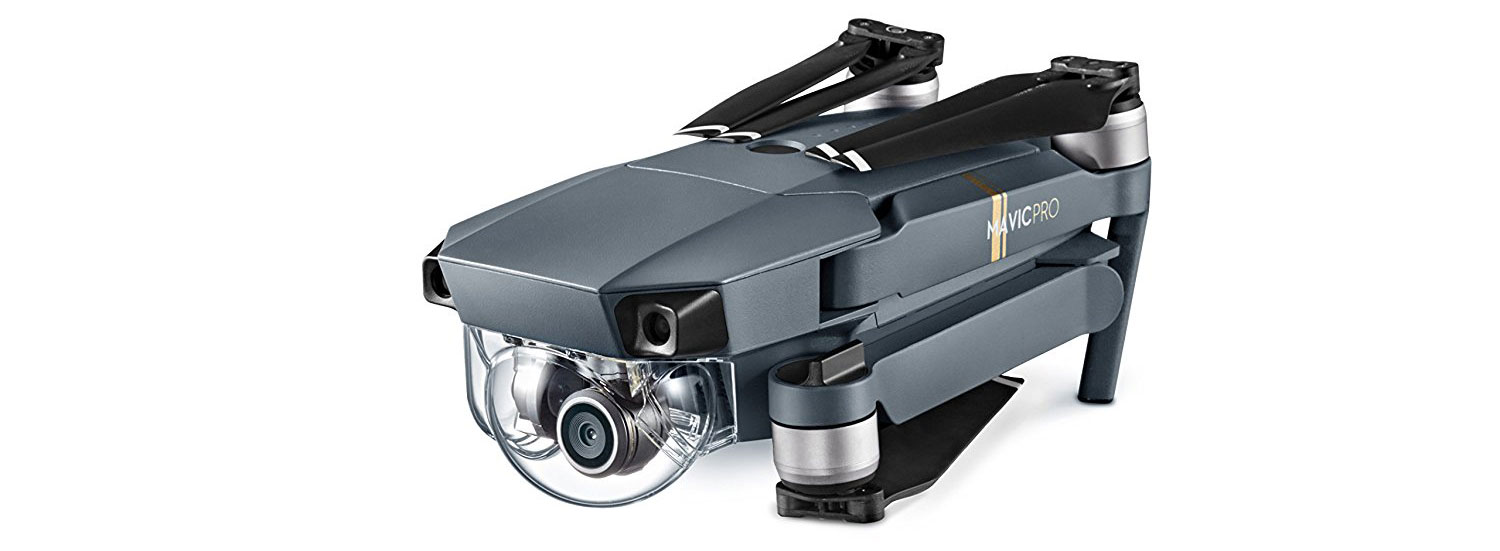
The rotor blades of the Mavic are easily swapped out after a crash: you just hold the motor, press the rotor down and twist it by 45 degrees to make it pop off. Installing a new rotor is the same: just press down and twist to lock it in place. The two different rotor types are indicated by different colored tops, which match with marks on the top of the appropriate motor. A set of four rotors costs about $22. That's a bit more expensive than some, but the price isn't ridiculous.
MORE: What the FAA's Drone Rules Could Mean for You
The only other easily replaceable part of the Mavic Pro is the gimbal cover, the transparent dome that protects the gimbal and camera. This could get scratched in a crash or if the drone bumps into something, but that is preferable to a damaged gimbal, especially as a new gimbal cover costs only $23.
Battery Life
The 3830 mAh battery that powers the Mavic Pro is smaller than some, but so is the drone itself. This combination gave us about 22 to 23 minutes of battery life. That's a bit short of the claimed 27 minutes, but it is enough to get a few good shots and get back to a safe landing without issues. The battery is also very easy to remove and replace: just press the buttons on the side and it pops out. At about $90, the spares are reasonably priced. Each battery took about an hour to charge. Serious fliers may want to look at one of the optional chargers that can handle multiple batteries.
Bottom Line
The DJI Mavic Pro pretty much ticks all of the boxes that drone pilots look for. It is small, portable, easy to use, easy to fly and takes good video. More important, though, it doesn't compromise much on these features. It flies like a larger drone, with admirable stability. It has a smaller battery than most drones, but still offers decent endurance.
The Mavic Pro isn't perfect (we'd like to see fewer jumps in the video when maneuvering and longer battery life), but it's pretty damn close. And that makes it the drone to beat for those who want to take casual airborne video. Pros may want to stick with a larger drone that has more stability, such as the Yuneec Typhoon H, but for the casual shooter who wants something they can take with them to easily record their adventures, the Mavic Pro is our top pick.
Richard Baguley has been working as a technology writer and journalist since 1993. As well as contributing to Tom's Guide, he writes for Cnet, T3, Wired and many other publications.
